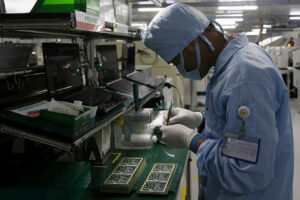The Securities and Exchange Commission’s (SEC) program to ease capital raising for agribusinesses could help modernize the farm sector, though adoption has remained limited since its 2023 launch, according to analysts.
“SEC FARMS (Securing & Expanding Capital for Farms & Agri-Business Related Modernization Schemes) has strong potential to mobilize retail capital for agriculture through its fast approval process, PHP 500-million project cap, and pre-funding rules that encourage discipline,” SM Investments Corp. economist Robert Dan J. Roces said in a Viber message.
“Early use of Group B auditors also reduces compliance costs for startups, though this comes at the expense of tighter oversight in the first five years,” he added.
Formalized under SEC Memorandum Circular No. 8, Series of 2023, the SEC FARMS initiative allows agribusiness companies to raise up to PHP 500 million per project, with a 28-day review period from filing.
The SEC memorandum said the program also aims to attract investments from local and overseas Filipino investors by using fintech tools to modernize agriculture, raise productivity, improve food security, and promote sustainable growth in line with the Philippine Development Plan.
Rizal Commercial Banking Corp. Chief Economist Michael L. Ricafort said the program could further develop the capital market by providing much-needed capital to the agricultural sector.
“This would help fund further modernization, mechanization, and the adoption of the best global technologies to further boost productivity and output while also reducing costs, thereby improving the incomes of farmers and profitability of agricultural businesses,” he said in a Viber message.
Mr. Ricafort added that the initiative could encourage more local and foreign private sector investors to pursue agriculture-related ventures through innovative funding sources beyond traditional bank loans.
“Investors would also be encouraged to participate in nation-building by investing more of their funds in agriculture-related investments,” he said.
Under the program, the SEC eased certain auditor and financial reporting rules to lessen the compliance burden on agribusinesses while maintaining investor protection.
“For retail investors, added transparency would strengthen confidence. With these safeguards, the program can be both a catalyst for farm modernization and a credible option for small investors,” Mr. Roces said.
Mr. Ricafort also said that strengthening investor protection in agriculture would raise productivity, lower costs, ensure transparency, and provide safeguards such as calamity insurance and disaster management, benefiting both the agricultural sector and investors.
Slow adoption
Meanwhile, China Bank Capital Corp. Managing Director Juan Paolo E. Colet observed that the program has seen limited uptake since it was introduced in 2023.
“The framework has been in place since 2023, but it does not appear to have gained significant traction,” he said in a Viber message.
“Although the program simplifies some aspects of securities registration, the process still entails a degree of sophistication, such as preparing a detailed prospectus and complying with corporate governance requirements. Given these considerations, many entrepreneurs in the agri sector might prefer to get financing from banks and other credit providers,” he added.
Under the memorandum, a corporation must be specifically established for agri-based projects and register securities not exceeding P500 million per project, either through a single registration or a series of registrations. Proceeds from the sale of registered securities must not exceed 50% of the total project cost.
To qualify for SEC FARMS, companies must have secured seed money equivalent to the remaining 50% of the total project cost. If the project has already started, the company must report its completion percentage and show that available funds amount to at least half of the total project cost.
The SEC said it has been encouraging agricultural corporations to use SEC FARMS for simplified securities registration process and tap the capital market for funding.
When asked about the target number of participating companies, SEC Chairperson Francisco Ed. Lim said: “We don’t have a target [number of companies] yet.”
“The first thing we will do [is to encourage] takers. Since in SEC FARMS, it’s been a while since we had takers,” Mr. Lim said on the sidelines of the Powertrends 2025 International Business Forum on Friday last week.
Last month, the commission presented the SEC FARMS guidelines to industry players at a conference.
“Think of SEC FARMS as a new set of farming tools — lighter, sharper, and more efficient. With the right tools, your hard work will yield bigger harvests, not just for your families but for the whole nation,” Mr. Lim said at the Sept. 24 conference. — Alexandria Grace C. Magno







 DOWNLOAD
DOWNLOAD














